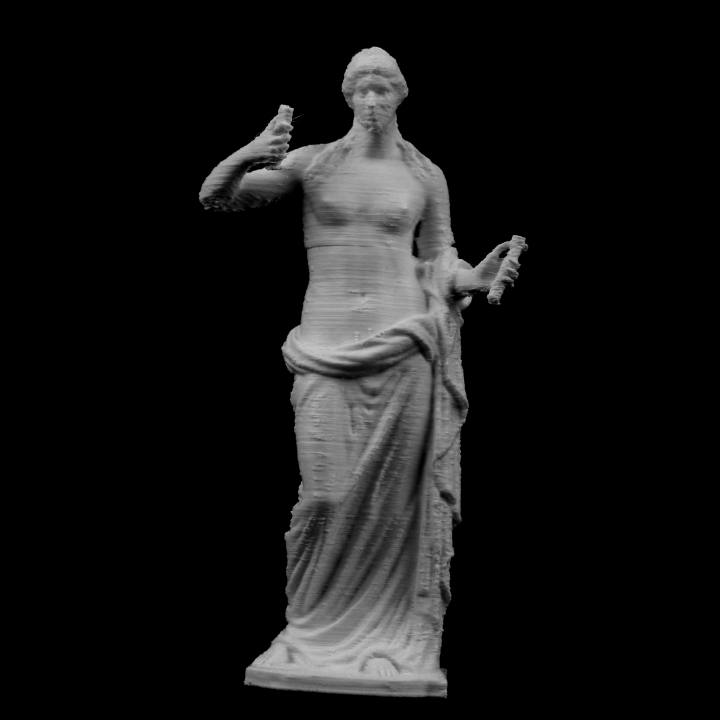
Venus of Arles (Cesi) at The Louvre, Paris
myminifactory
The Venus of Arles stands at 6.4 feet tall, a stunning sculpture of the goddess Venus on display at the Musée du Louvre in Paris. Crafted from Hymettus marble, this masterpiece dates back to the end of the 1st century BC and may be a replica of the Aphrodite of Thespiae created by renowned sculptor Praxiteles. According to legend, Praxiteles was commissioned by the courtesan Phryne to create the original work, which featured Cupid, Phryne, and Aphrodite as its central figures. In the 2nd century AD, Greek historian Pausanias wrote about a group of statues in Thespiae, Boeotia, that included the goddess Venus. This discovery led scholars to believe that the Praxitelean style may be evident in the head's resemblance to the Cnidian Aphrodite, another famous work by Praxiteles. The original Aphrodite of Thespiae would have been a product of Praxiteles' youth, created around 360 BC. However, it is thought that this sculpture was inspired by his later work, the fully naked nude Cnidian Aphrodite, which he crafted around 350 BC. The Venus of Arles was unearthed in several pieces at the Roman theater in Arles and may have been part of a larger sculptural program executed by Greek artisans. The goddess Venus holds significance as the divine ancestor of the gens Julia, a family that was closely tied to Julius Caesar. When the Romans conquered Gaul, they rewarded the city of Arles for its loyalty to Caesar. In response, Arles erected a semi-nude heroic statue of Augustus in the center of their sculptural program. The Venus of Arles was discovered by workmen digging a well in 1651 and initially featured only the head. The discovery of further fragments led to restorations under the guidance of royal sculptor François Girardon, who aimed to transform the sculpture into a more definitive representation of Venus. However, these alterations raised questions about the extent to which Girardon had altered the original work. Despite its restored state, the Venus of Arles remains an important artifact of ancient Greek art, featuring a Praxitelean head that is comparable to his Aphrodite of Cnidus. The sculpture's authenticity was further confirmed by the discovery of a cast made from the initial restoration, which revealed Girardon's extensive changes. Today, the Venus of Arles resides at the Musée du Louvre, although it is not currently on display. A replica can be found in the municipal building in Arles, serving as a testament to the enduring legacy of this ancient masterpiece.
With this file you will be able to print Venus of Arles (Cesi) at The Louvre, Paris with your 3D printer. Click on the button and save the file on your computer to work, edit or customize your design. You can also find more 3D designs for printers on Venus of Arles (Cesi) at The Louvre, Paris.
